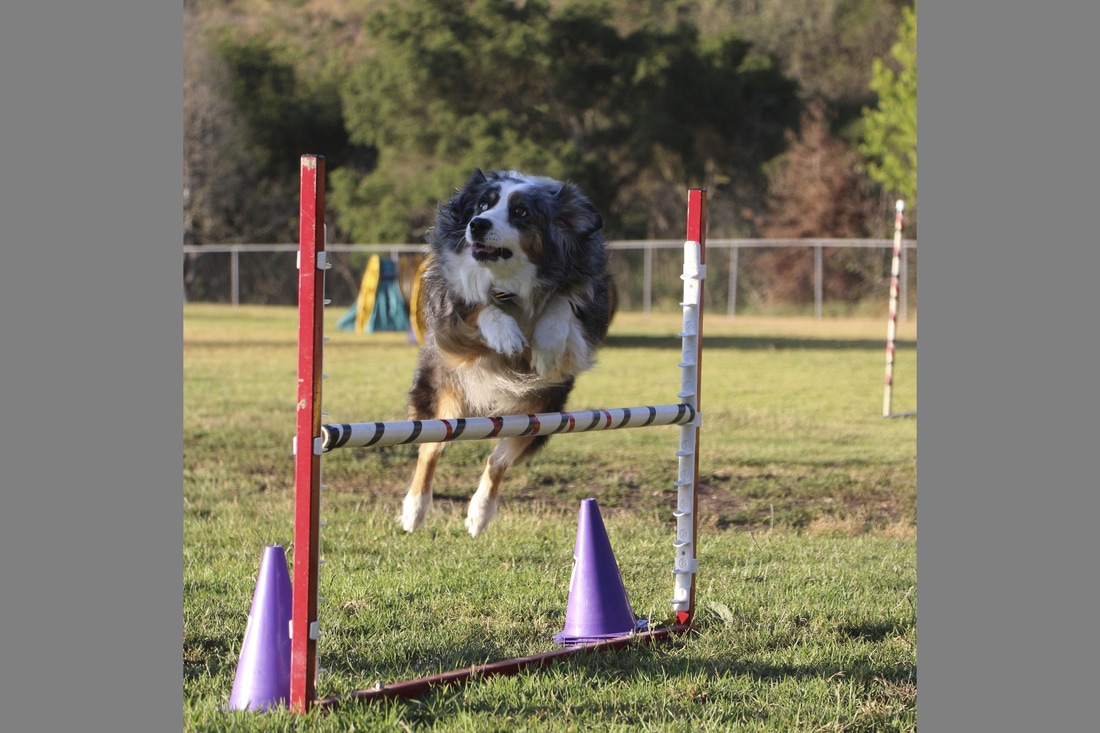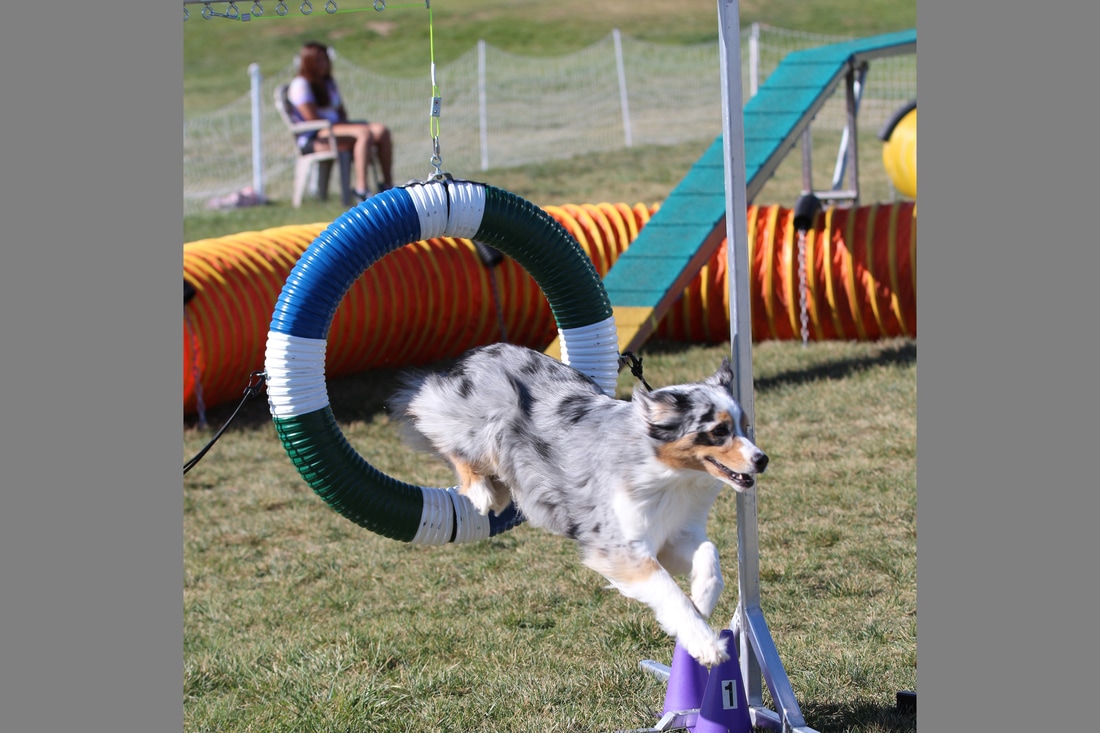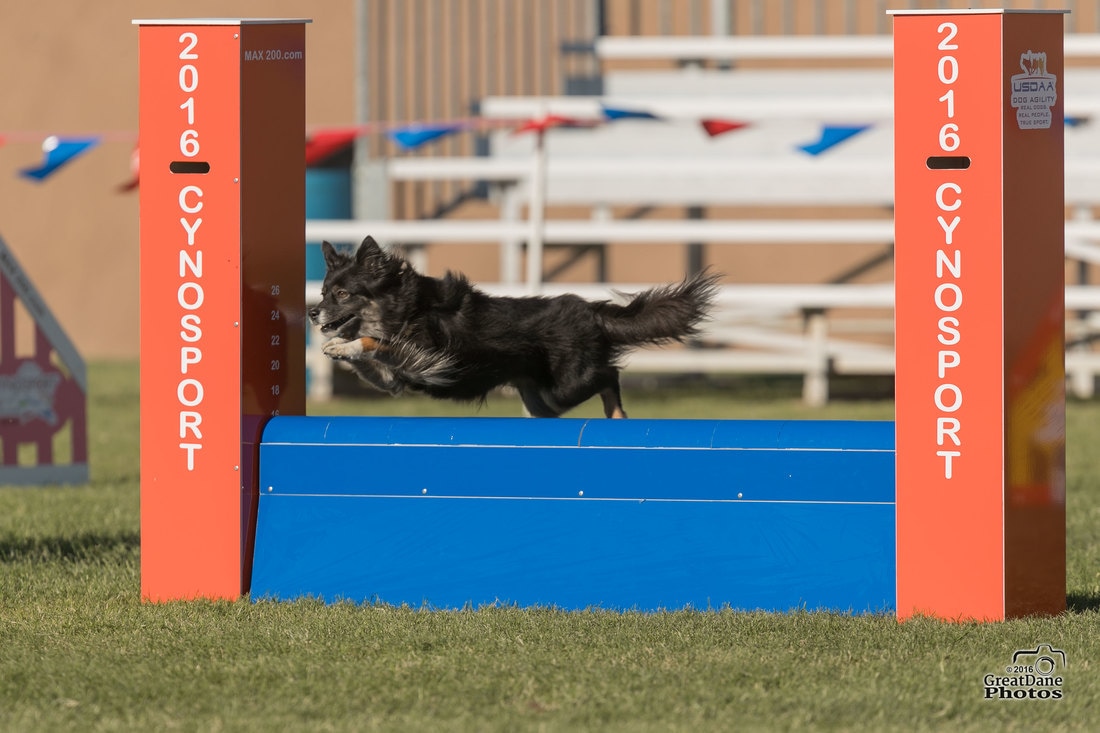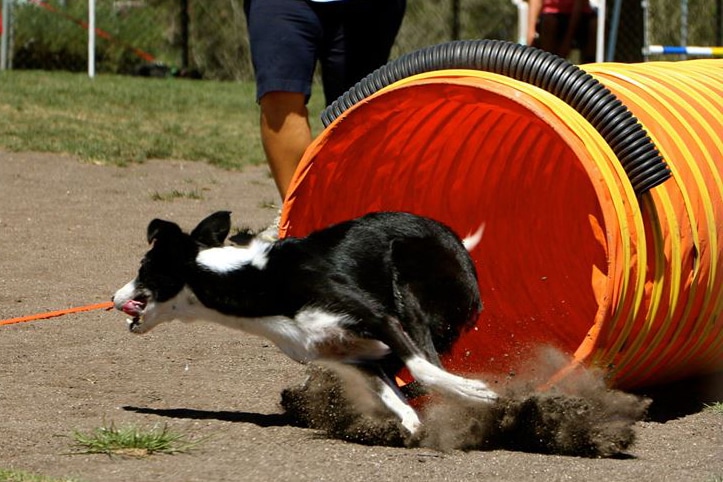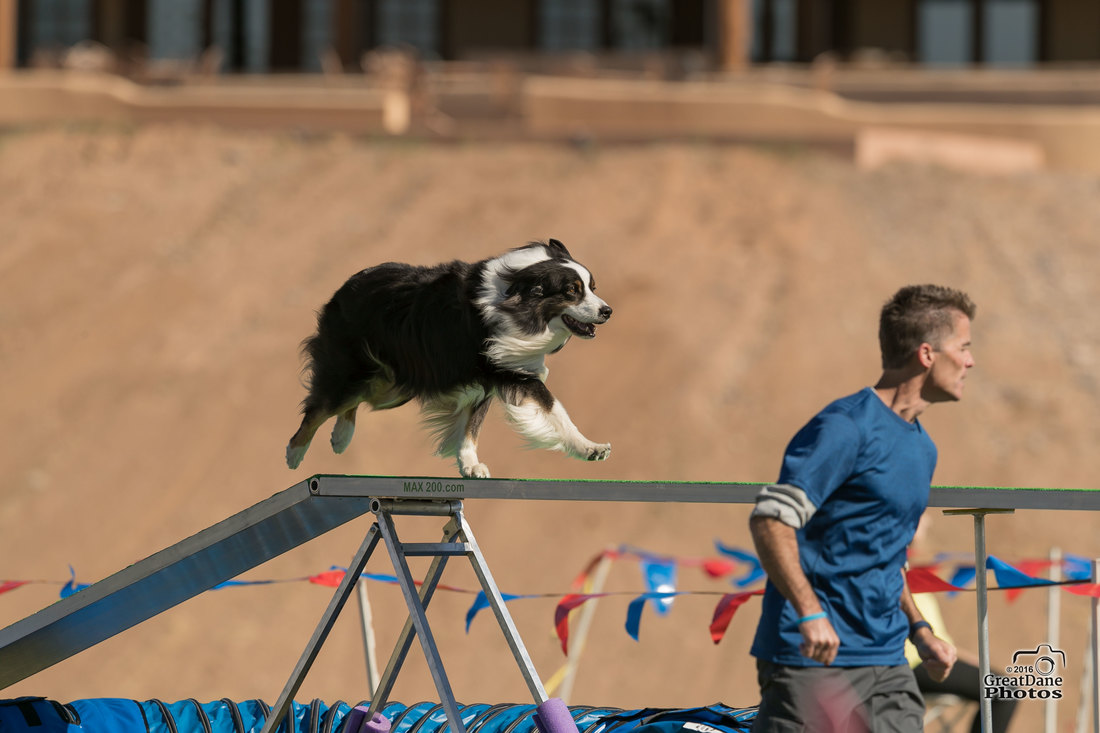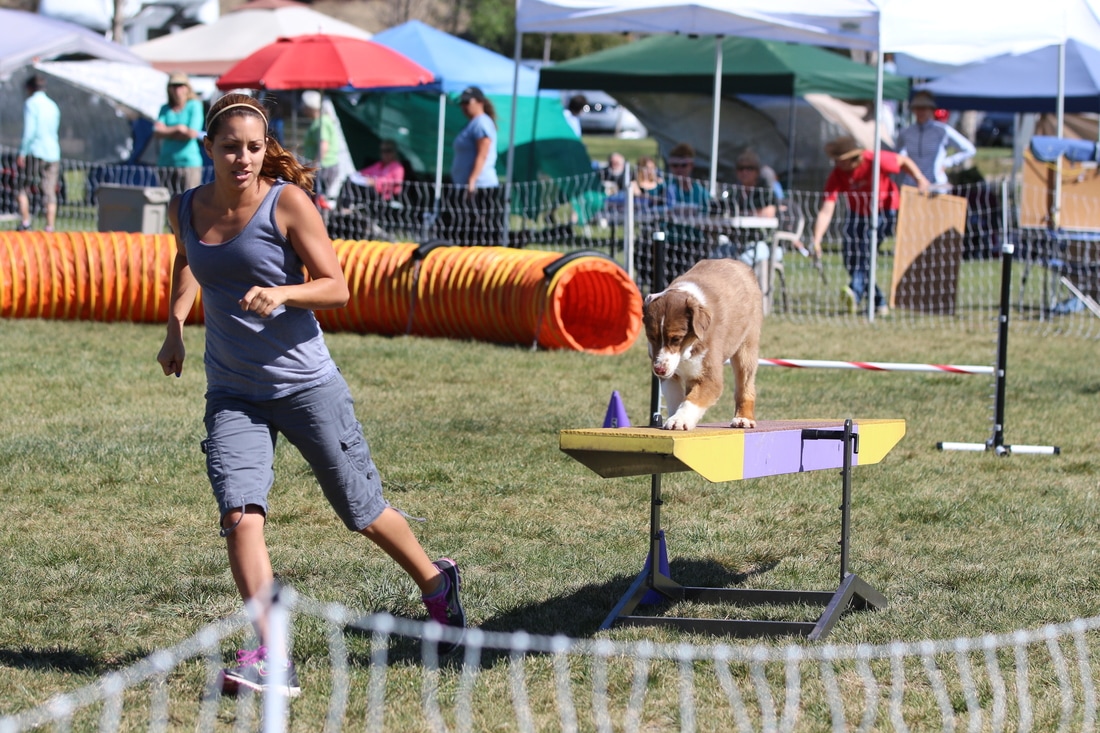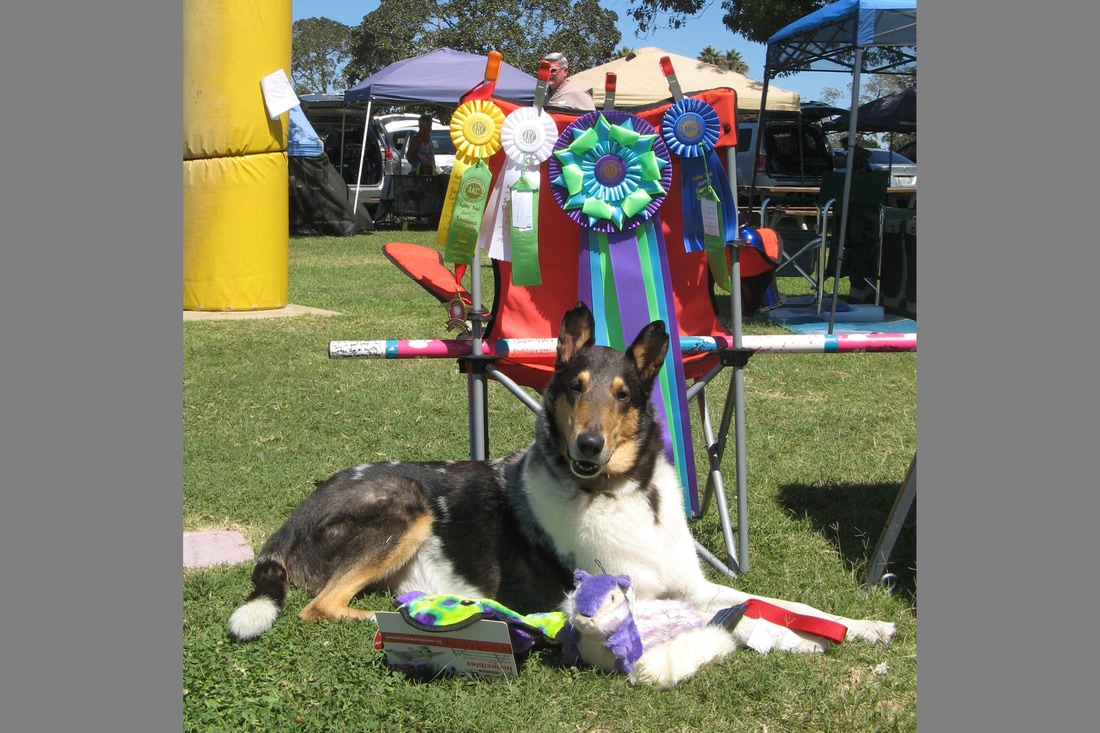Santa Barbara Flyers USDAA Agility Trial, March 2019, River View Park, Buellton CA
agility [uh-jil-i-tee]
noun
1. the power of moving quickly and easily; nimbleness
2. the ability to think and draw conclusions quickly
3. a game we play with our dogs
The sport of Agility is suitable for nearly all breeds of dogs and mixed breeds, and it is a great way to exercise and build an inseparable bond between you and your dog. And it’s really fun!
Agility teams consist of a dog and a handler. The handler (person) trains the dog to navigate various obstacles, and guides the dog around a course made up of these obstacles. Every course is unique, and at an Agility competition (a.k.a: Trial), the handler is given about 8-minutes to walk the course, learn the sequence of about 17 – 20 obstacles, and determine how to best handle the course. The dog does not see the course prior to a competition ‘run’, and the handler must guide the dog through the sequence of obstacles. The Standard Agility class is scored on time plus faults. A clean-run is executed without faults, and the fastest clean-run wins a Standard Agility class. An obstacle can be faulted for various reasons. For example, a jump is faulted if the dog (or handler) knocks the jump bar, and a contact obstacle is faulted if the dog enters or exits the obstacle without having at least one paw in the yellow contact zone. (See contact obstacles below: Teeter-Totter, A-Frame, Dog Walk.) Another type of fault, a refusal, can be called by the judge if the dog does not complete the obstacle on the first approach. The Agility team can also be faulted or eliminated for going off course, or other undesired behaviors.
Agility is an International sport, popular in the United States, Europe, and around the world. Agility can be demanding for both mind and body, and for both dog and handler; however, the sport attracts handlers of varying ages and degrees of physical fitness, as many dogs can be trained to handle at a distance, which reduces the physical demands of the sport on the handler. It’s best to start a dog in Agility at a young age (1 – 2 years), and they say it takes about three years to make an Agility Champion (ADCH) (PDCH) (MACH) (PACH). It’s easy to get hooked on the sport of Agility, and many Dogs will continue to compete (or just participate for fun and exercise) until they are 10 – 12 years in age, or even older. A successful Agility team requires a strong dog/handler bond.
A Standard Agility course might consist of any or all the Agility obstacles listed below:
Agility teams consist of a dog and a handler. The handler (person) trains the dog to navigate various obstacles, and guides the dog around a course made up of these obstacles. Every course is unique, and at an Agility competition (a.k.a: Trial), the handler is given about 8-minutes to walk the course, learn the sequence of about 17 – 20 obstacles, and determine how to best handle the course. The dog does not see the course prior to a competition ‘run’, and the handler must guide the dog through the sequence of obstacles. The Standard Agility class is scored on time plus faults. A clean-run is executed without faults, and the fastest clean-run wins a Standard Agility class. An obstacle can be faulted for various reasons. For example, a jump is faulted if the dog (or handler) knocks the jump bar, and a contact obstacle is faulted if the dog enters or exits the obstacle without having at least one paw in the yellow contact zone. (See contact obstacles below: Teeter-Totter, A-Frame, Dog Walk.) Another type of fault, a refusal, can be called by the judge if the dog does not complete the obstacle on the first approach. The Agility team can also be faulted or eliminated for going off course, or other undesired behaviors.
Agility is an International sport, popular in the United States, Europe, and around the world. Agility can be demanding for both mind and body, and for both dog and handler; however, the sport attracts handlers of varying ages and degrees of physical fitness, as many dogs can be trained to handle at a distance, which reduces the physical demands of the sport on the handler. It’s best to start a dog in Agility at a young age (1 – 2 years), and they say it takes about three years to make an Agility Champion (ADCH) (PDCH) (MACH) (PACH). It’s easy to get hooked on the sport of Agility, and many Dogs will continue to compete (or just participate for fun and exercise) until they are 10 – 12 years in age, or even older. A successful Agility team requires a strong dog/handler bond.
A Standard Agility course might consist of any or all the Agility obstacles listed below:
Winged Jump & Wingless Jump
Spread & Extended Spread Jumps (Double & Triple)
Tire Jump & Wall Jump
Tunnel
Weave Poles
A-Frame
Dog Walk
Teeter-Totter (Seesaw)
Agility can just be a fun way to spend the afternoon with your dog(s), or you might get hooked and want to compete for titles, ribbons, medals and trophies!
Contact the Santa Barbara Flyers and we’ll show you how to get involved in the sport of Agility!



